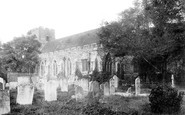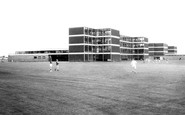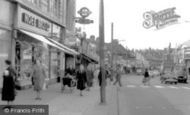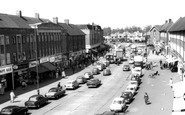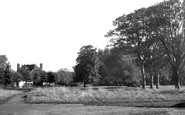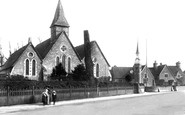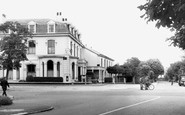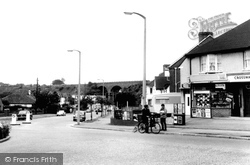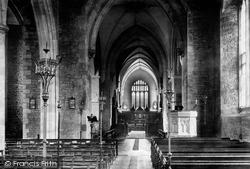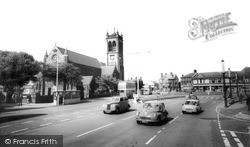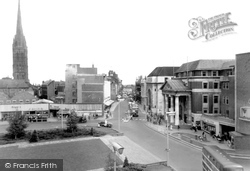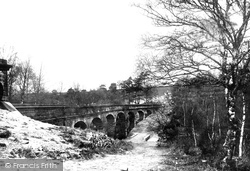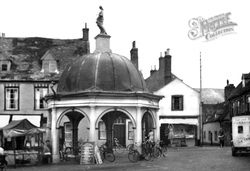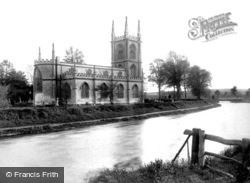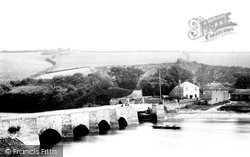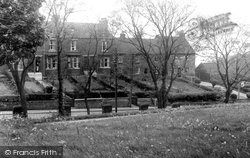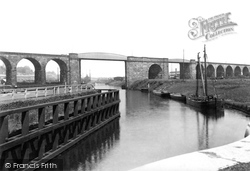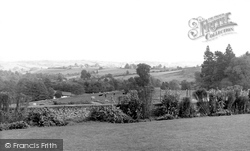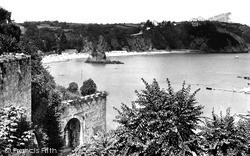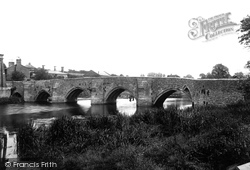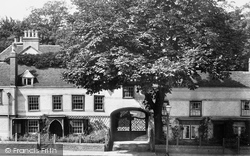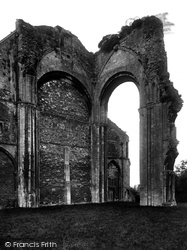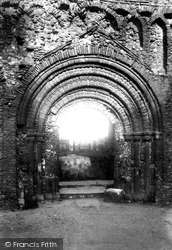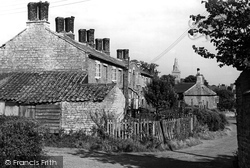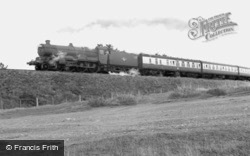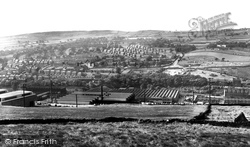Places
Sorry, no places were found that related to your search.
Photos
5 photos found. Showing results 301 to 5.
Maps
83 maps found.
Books
Sorry, no books were found that related to your search.
Memories
1,127 memories found. Showing results 151 to 160.
Those Were The Days By Kathleen Mc Carthy
I am sure this is St Botolph's church on The Hill where I used to be in the choir around 1949. The vicar was Rev. Johnson at the time. His wife and family lived in the vicarage a stone's throw away. There ...Read more
A memory of Northfleet in 1949 by
Those Were The Days
I was still a teenager, 17 years old and my baby brother at school at Bede Campus. I escaped the campus by virtue of it not having been completed when I passed the 11+. The town centre in Billingham was still being built, ...Read more
A memory of Billingham in 1965 by
Those Were The Days
I was born in Straight Road Harold Hill in 1943 and in 1947 we moved into the Prefabs across the road to Holly Road which was just off Briar Road, these Prefabs which I believe were errected by German Prisoners of war were ...Read more
A memory of Harold Hill in 1950 by
Those Were The Days
I lived in Wellis Avenue from1968 until 1979 and I think we we were the very last family to leave the flats in Ardwick Green before they wre demolished. We were the Connolly family, Our mam was Lucy and I was the youngest of five ...Read more
A memory of Ardwick by
Those Halcyon Days Of My Youth!
I remember my relatively short time in Wembley with great affection. At my mother's instigation we moved from Willesden to Lonsdale Avenue, Wembley, in 1953 when I was fourteen. My father paid the princely sum of ...Read more
A memory of Wembley in 1953 by
This Was Our Main Shopping Centre In The 1950's
I have vivid memories of Tolworth Broadway. As a child I was born in Tolworth (strictly Kingston Hospital in April 1948 just for my birth that is). Mum, my sister and I would go to the Broadway ...Read more
A memory of Tolworth by
This Was A Fantastic Playground
I remember my school days and the games played on this green, the trees forming goal posts, and wickets for cricket. My uncle Ernie's business ('KNIGHTS FOR FISH & CHIPS') was sited for all the ...Read more
A memory of Ormesby St Margaret in 1930 by
Then And Now
I lived in George Road during the '80s and during my time there, collected old postcards of the area. Much later, I enjoyed locating the exact camera positions and taking videos of how the scenes appear now. This was one of the ...Read more
A memory of Farncombe in 1900 by
The Walk To School Ryeground Lane
Having walked up the hawthorn-lined path from Graburn Road to Church Road, I would turn towards the Embassy Cinema and The Grapes Hotel (pictured) and turn into Ryeground Lane on the way to St Peter's Infants ...Read more
A memory of Freshfield in 1945 by
The Temporary Chapel, Bede College Durham
This photograph of 1929 is of special interest to me because of the long, white building in the top left-hand corner of the image. This was the temporary chapel at the College and served in that capacity from ...Read more
A memory of Durham by
Captions
1,233 captions found. Showing results 361 to 384.
crossroads was a thriving commercial intersection at which three north eastern suburbs meet - Llanishen to our right, Cyncoed to our left and Heath straight ahead through the railway arches
At the east end of the nave aisle and on each side of the chancel arch are large brass posts with decorated candle holders, five in all.
The buildings all survive but the whole view has changed considerably with, believe it or not, a much narrower road.
In the picture we have two buildings from the 1930s: Lloyd's Bank (1932) with its giant arch, and the National Provincial Bank with its neo-classical portico.
There are two massive bridges in the town, and before the line east reaches another viaduct at Golcar, it passes over these smaller seven arches opposite the town of Linthwaite.
The Butter Cross was built in 1689, after the fire of the previous year which destroyed much of the town.
The flagpole is still in place, and only the trees have grown, creating a much more rustic scene than is evident here.
This photograph shows the old four-arched bridge over the estuary. There has been a crossing here since the 10th century. In the background, hedges snake their way up over the slopes.
At the right-hand end of the terrace is the Queen's Arms, a much earlier stone building.
Standing high above all three, it consists of 48 arches plus the two girder spans near the middle shown here.
Although much of St Peter's church dates from as recently as the 14th century, there are signs of a much earlier church on the site.
The much-expanded village rests on an ancient site - the remains of a Roman house were found here, and the church has Saxon foundations.
In the picture we have two buildings from the 1930s: Lloyd’s Bank (1932) with its giant arch, and the National Provincial Bank with its neo-classical portico.
The gabled building on the right with the arches is the Fuller Baptist Church, named after Andrew Fuller, who founded the Baptist Missionary Society.
Inside, two great arches culminate in chimneys which project into the garden.
Small fishing boats are drawn up on the beach, a ramp climbs past the fish cellar, and on the extreme left we can just see an arched incline to a limekiln which was in use from at least 1835
With its five arches, this ragstone bridge over the River Medway is said to be the finest medieval bridge in the south of England.
These, along with the arch, were moved from either St Michael's or one of the London churches and rebuilt at the Chantry by Sir Walter Gilbey.
This photograph shows the great arch at the eastern end of the abbey. It formed part of the structure above which was built the lantern tower and spire.
This view, through the great west door with limestone in the arches, shows the building materials well: Roman bricks, septaria and flint.
Two of the small arches were replaced with one large one, which explains why the bridge is not symmetrical.
The terrace of cottages in Allotment Lane has ragstone walls and a brick main façade; there is a low pediment at the centre with an arched window.
The train is seen from the Carlyon Bay golf course near the Crinnis arch. Diesel locomotives made their first appearance in the late 1950s, and the last steam train ran in 1964.
Stone from here was used to build Sheffield's Wicker Arches that carried the Manchester railway line from 1848 to 1969.
Places (0)
Photos (5)
Memories (1127)
Books (0)
Maps (83)

